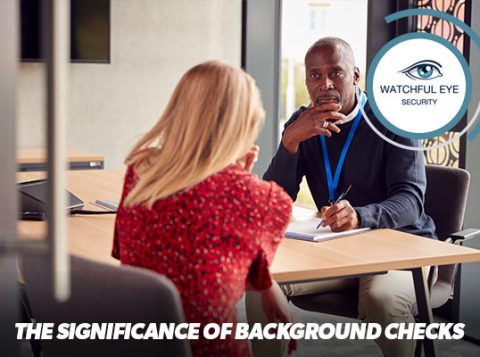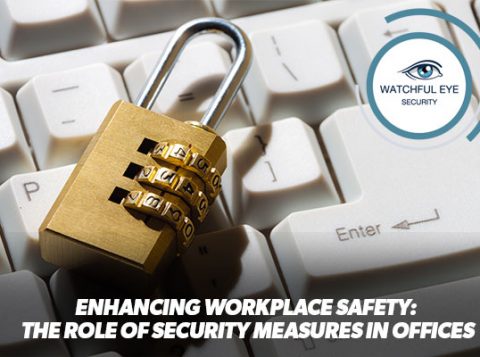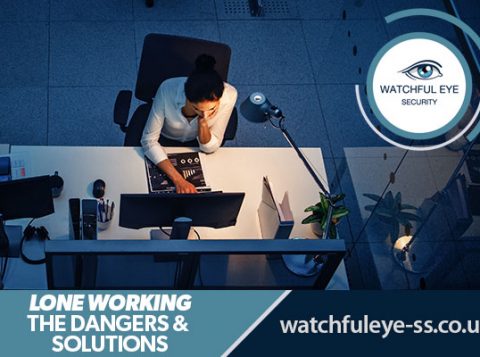
Physical Security Workers Are Knowledge Workers
Security has always depended on knowledge. When a nightclub bouncer checks the guest-list before letting you past the velvet rope, or a TSA officer runs your passport and prints against the no-fly list, they are using information in real-time to control access and keep everyone safe.
The need for knowledge has only grown more apparent in the era of ubiquitous security tech. Sensors, smart locks and other high-tech devices in use across the private sector, from sports and music venues to hospitals and corporate campuses. From biometric access control to AI-powered weapon detectors, we increasingly use sophisticated, data-driven tools to keep people safe.
All that technology, though, still relies on human workers to scan passes, monitor screens, interpret signals and address glitches. That is where problems arise, because many security workers are part-time contractors thrust into frontline roles with little or no training. In my six years as the NBA’s Chief Security Officer, I have never seen a venue where contract security workers had the information needed at their post to troubleshoot equipment when things went wrong without a time-consuming escalation process.
This tension — between complex technologies and processes on the one hand, and an undertrained contract workforce on the other — makes security systems far more vulnerable than they should be. To keep everyone safe, we need to break through this bottleneck. Downloading apps or flipping through pdfs are not the answer. It is time to start leveraging technological innovation not just to harden our perimeters, as well as give frontline security staff access to the knowledge they need to succeed.
Why Knowledge Matters
Elevating knowledge processes for security teams is mission-critical, because when it comes to security things rarely go to plan. Equipment malfunctions, software crashes, and people do weird and unanticipated things. If your team lacks the knowhow to respond to unanticipated challenges, you are essentially just crossing your fingers and hoping for the best — and that is not an effective security strategy.
In a knowledge-poor environment, you will inevitably see increased equipment failures, unresolved outages, longer lines, and a worse (and less secure) experience for everyone. That is not frontline workers’ fault; they do great work, even when their training consists of little more than a company shirt and a radio, and told where to stand. If they do not know how to reboot a crashed badge-scanner or recalibrate a metal detector, it is only because we have not given them the knowledge they need.
The trouble, of course, is that contract security workers do not only play a single well-defined role; part of the reason they are so widely used is that they can be hired as-needed, and quickly reassigned to plug gaps or meet shifting operational needs. For obvious reasons, that makes traditional education and onboarding processes impractical. We do not need better training — we need new tools to rapidly and reliably give workers access to the specific knowledge they need, in the exact moment that they need it. As things stand, that information is generally locked away in user manuals and technical documentation. Even if it is accessible when it is needed, such documentation is usually hard to read and even harder to make sense. When things go wrong, most contract workers wind up having to call a supervisor or customer support for help getting their devices back online — and good luck getting through to anyone 10 minutes before tip-off on a Friday night.
A Better Approach
Low-cost, scalable solutions are necessary to stay out of workers’ way until needed — but rapidly provide access to reliable information when things go wrong. You cannot solve that problem with paper manuals or apps. Instead, we need to apply the digital technologies that are transforming security tech to the knowledge problem, too.
Using AI tools, for instance, it is possible to digest product manuals, transforming pages of tiny print into clear, easy-to-follow guidelines and how-to explainers that can appear on a worker’s smartphone. Using QR codes, meanwhile, content is intuitively discoverable. If a gadget malfunctions, a worker can simply point their phone at an affixed code to get the exact info they need — perhaps including videos or diagrams tailored to their specific use-case.
Such solutions make contract security workers smarter in the moments that matter — and because they capture valuable information about the way security technologies and processes work in the real world, they help make organizations smarter, too. Data analytics can identify recurring glitches or unresolved pain points, for instance, enabling manufacturers to address problems and facility managers to harden their security systems.
Incoming data can also support filings under the post-9/11 SAFETY Act, which gives businesses access to federal liability protections if they validate and document investments in qualified security technologies and processes. As we saw with MGM’s $800 million settlement following the 2017 Mandalay Bay shooting, there is still plenty of uncertainty around the implementation of SAFETY Act protections. Getting this right from day one — and documenting that you’re getting it right — should be a top priority for today’s facility operators and security tech manufacturers.
The Stakes are High
By definition, the stakes are high when it comes to security tech. Until we start treating security as a knowledge problem, we will have gaps in our security — and that means preventable accidents will continue to happen, bad actors will exploit those gaps, and organizations remain liable for their failures.
From reputational risks to the threat of lawsuits if things go wrong, facility operators and technology providers need to take this challenge seriously. The world is not getting any less chaotic. We need to use all the tools at our disposal to solve the knowledge problem — and ensure security tech keeps on operating as intended, no matter what the world throws at us.
We owe it to the people we are responsible for protecting, and those we hire to provide that protection, to ensure that frontline security workers have every possible advantage. Security professionals carry a heavy burden — so let us lead from the front, and leverage innovative knowledge solutions to support our teams, and ensure a safer environment for everyone. At the end of the day, the better we get at solving the knowledge problem, the better our security systems — both human and digital — will work in the real world.
To discuss professional security requirements please contact us.
Credit: Security Today

























































































































































